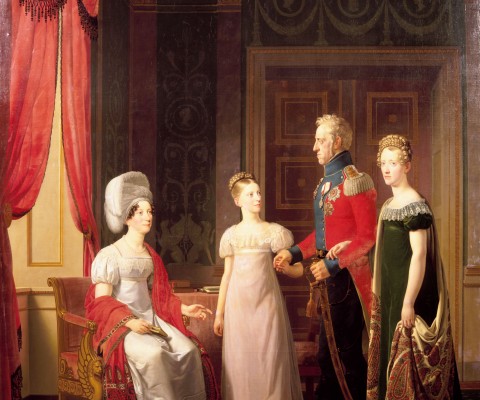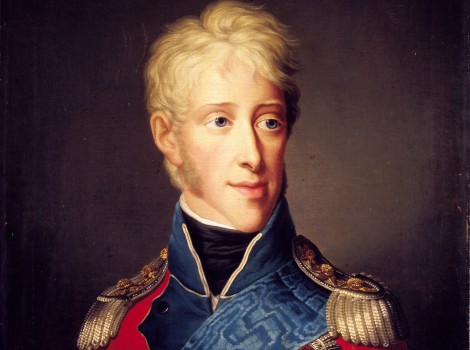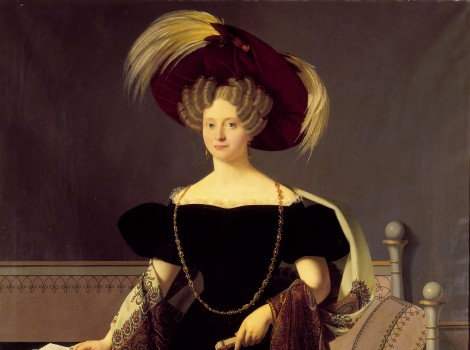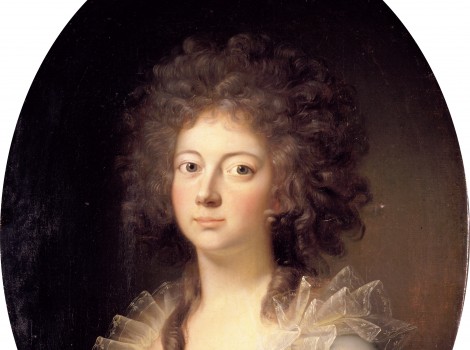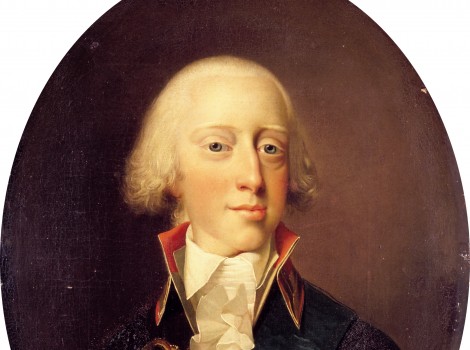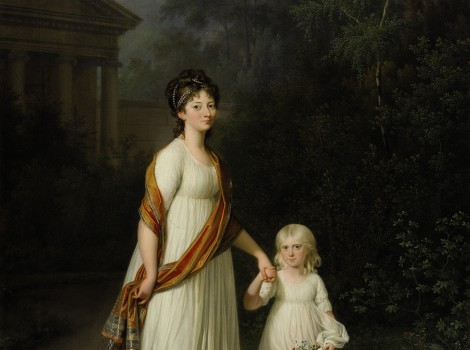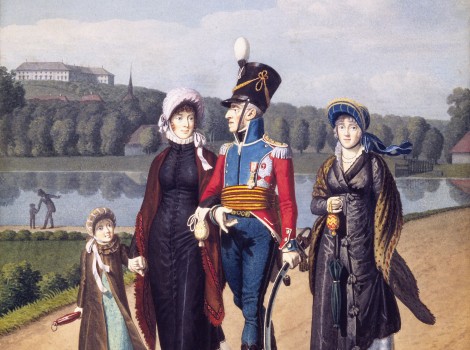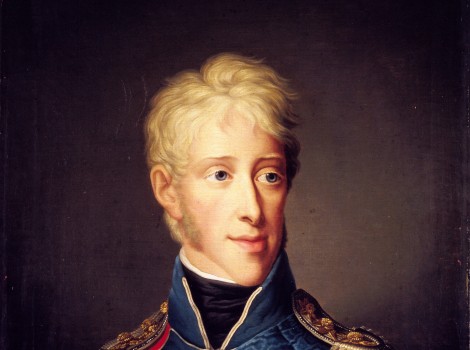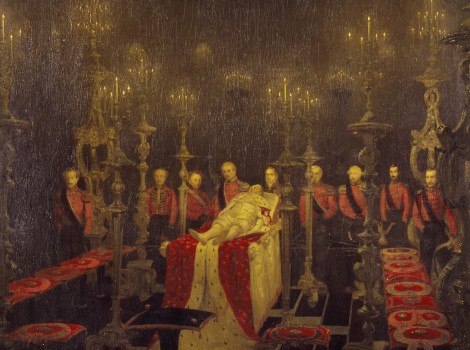Frederik VI and family
Frederik VI and Queen Marie with Princesses Caroline and Vilhelmine. Painted by C.W. Eckersberg, 1821. The decorations in the portrayed room along with the military attire worn by Frederik VI is a testimony of the political alliance with Napoleon and France, an alliance that ended costly not only for France but Denmark as well, since all of Norway was lost to Sweden and the entire danish fleet was lost to Britain. Despite its militaristic tone, one cannot escape the strong civil and bourgeois symbols of an ordinary, yet idealized, family life, portrayed in other words as a man of, and a family of, the people.
Frederik VI and Marie had a total of 8 children, but the portrayed princesses were the only ones to make it to adulthood, thereby breaking the direct male succesive heritage.

 Dansk
Dansk
 English
English
 Deutsch
Deutsch

